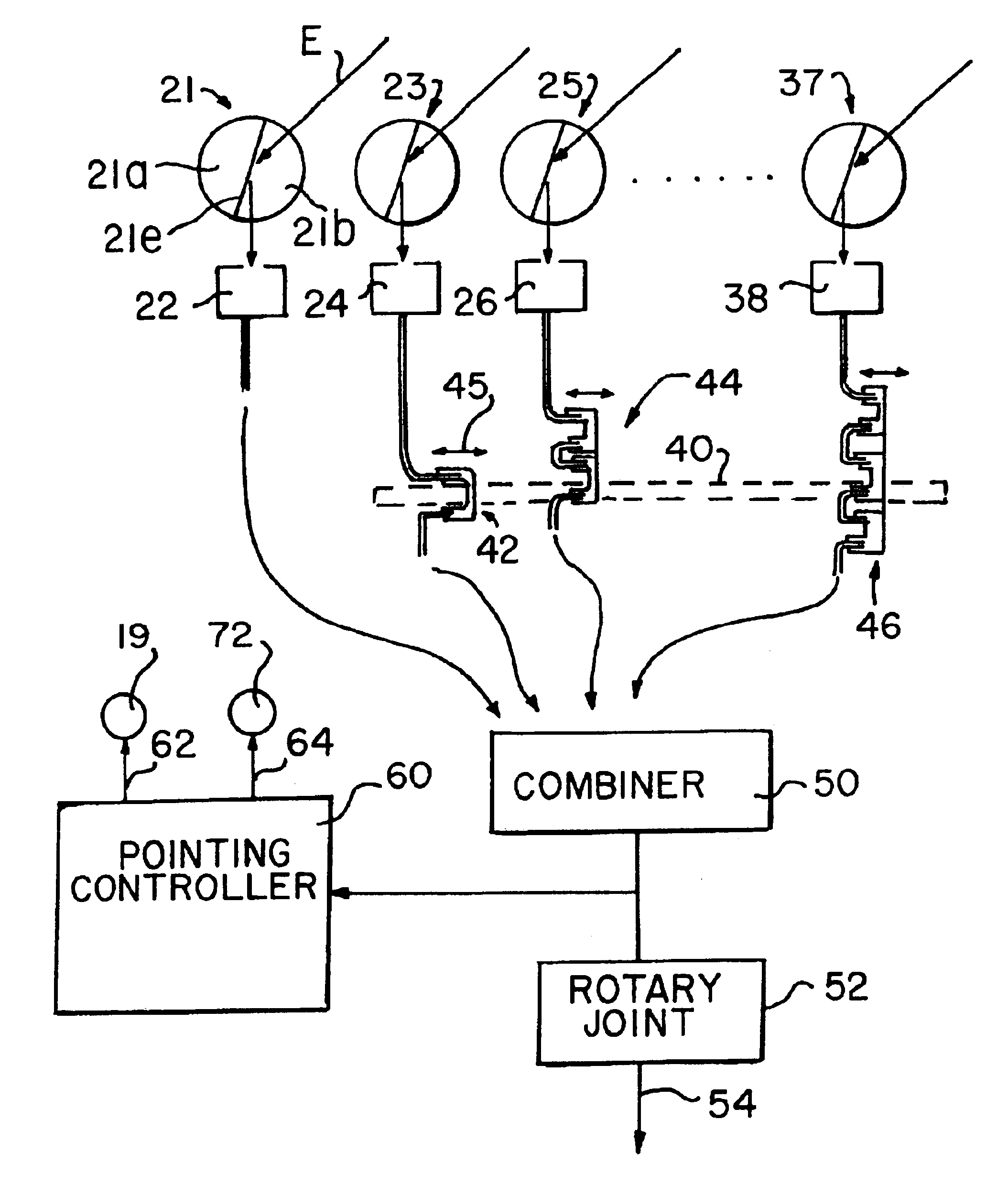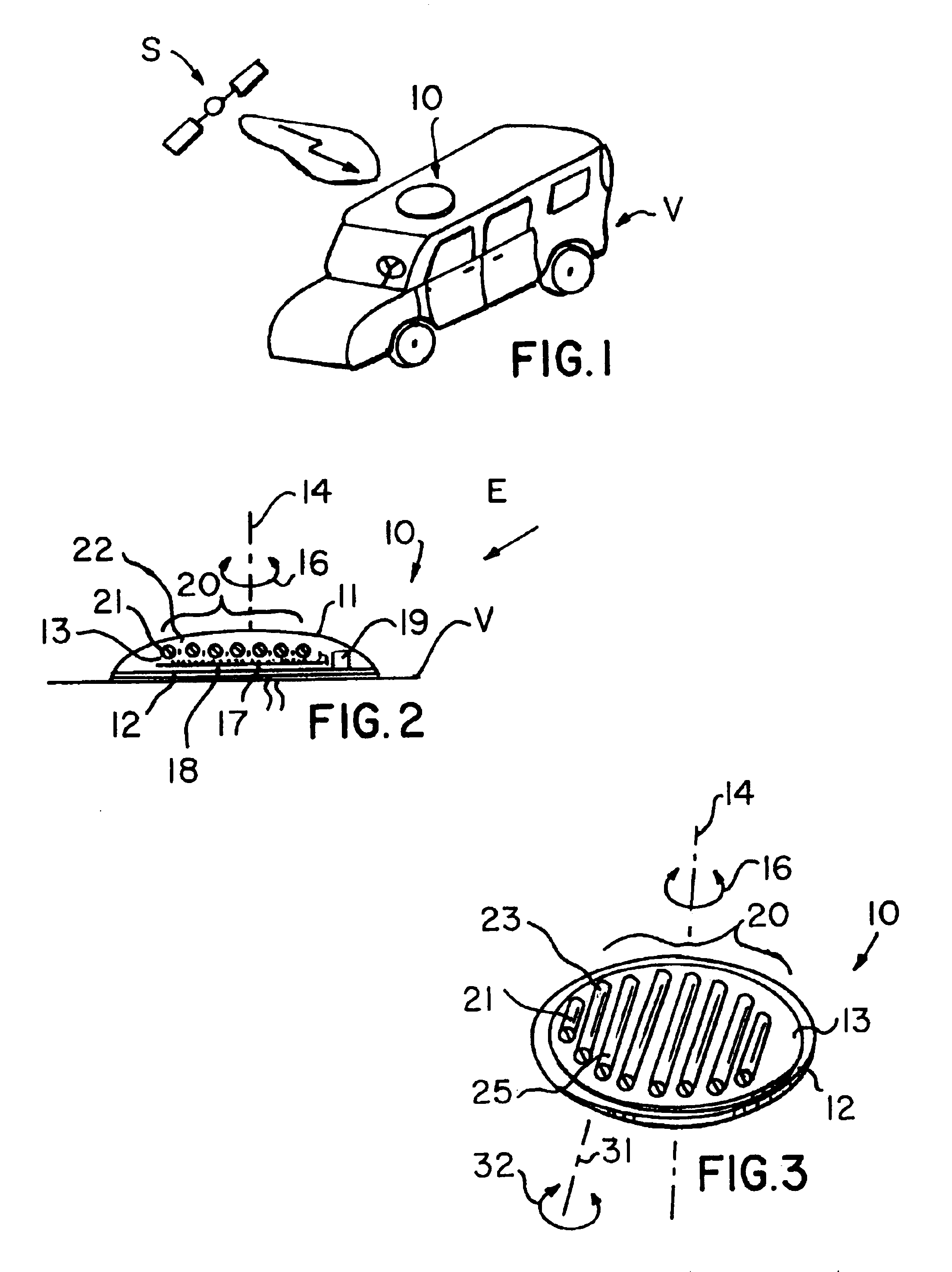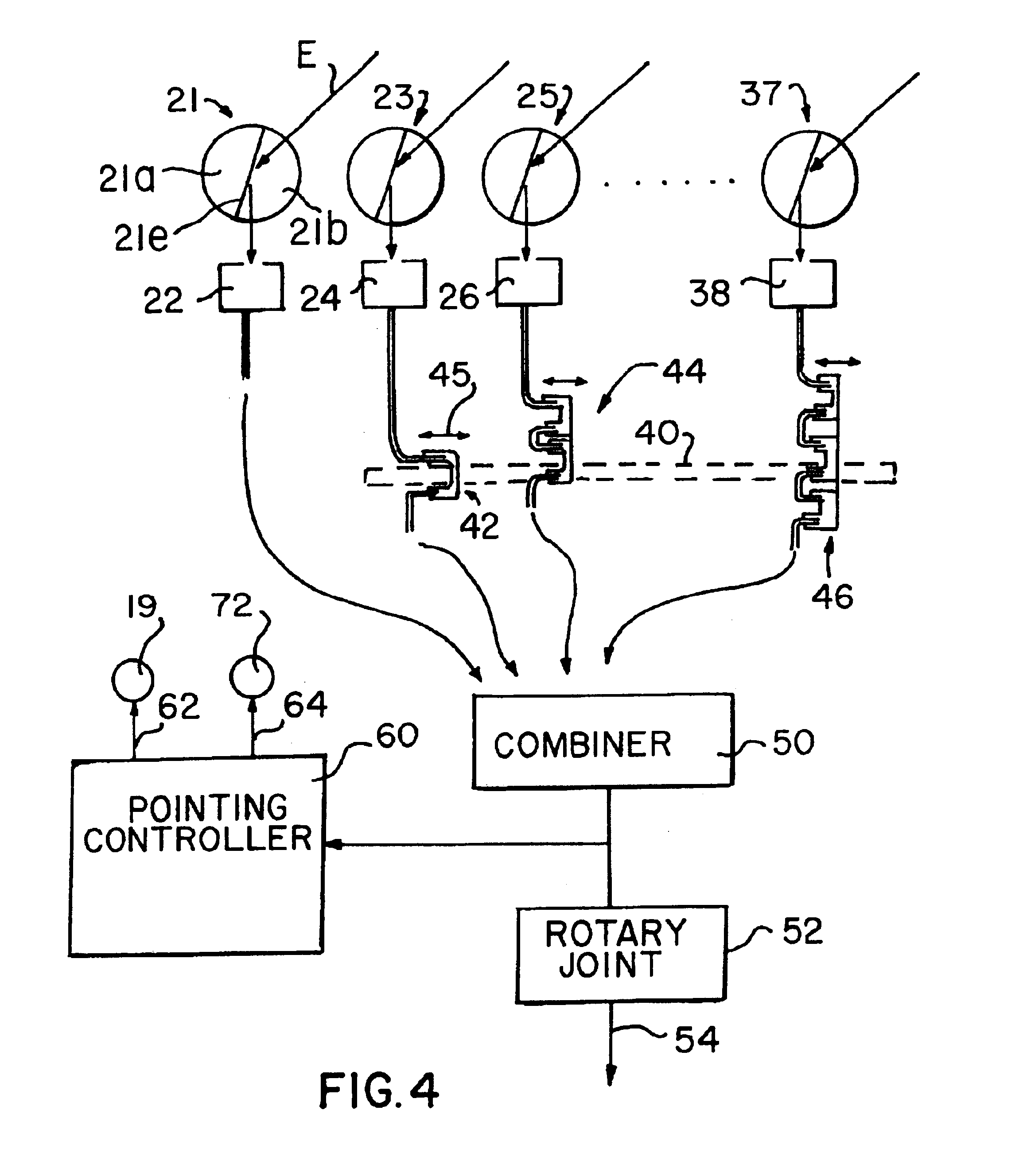Antenna array for moving vehicles
a technology for moving vehicles and antennas, applied in the field of antennas, can solve the problems of antennas protruding significantly, difficult for a typical antenna to track a signal source, and adversely affecting the aesthetics of the vehicl
- Summary
- Abstract
- Description
- Claims
- Application Information
AI Technical Summary
Benefits of technology
Problems solved by technology
Method used
Image
Examples
Embodiment Construction
[0031]Referring now in detail to the drawing figures, in which like reference numerals refer to like parts throughout the several views, FIG. 1 is a schematic illustration of an antenna system 10 according to a preferred form of the invention and shows the antenna system 10 mounted to a van V for receiving signals while the van moves, such as from a DBS satellite S. The antenna system 10 has a rather low profile, making it especially useful for mounting to the surface of a vehicle. In particular, the height of the system is much smaller than its transverse dimension (diameter, if the antenna system is round). For example, it is contemplated that if implemented as a receive antenna for receiving DBS signals, the antenna system typically would have a round overall shape, with a diameter of about 24 to 36 inches and would have a height of only about 2 to 4 inches. Of course, those skilled in the art will recognize that while the exemplary embodiments of the invention shown in the figur...
PUM
 Login to View More
Login to View More Abstract
Description
Claims
Application Information
 Login to View More
Login to View More - R&D
- Intellectual Property
- Life Sciences
- Materials
- Tech Scout
- Unparalleled Data Quality
- Higher Quality Content
- 60% Fewer Hallucinations
Browse by: Latest US Patents, China's latest patents, Technical Efficacy Thesaurus, Application Domain, Technology Topic, Popular Technical Reports.
© 2025 PatSnap. All rights reserved.Legal|Privacy policy|Modern Slavery Act Transparency Statement|Sitemap|About US| Contact US: help@patsnap.com



